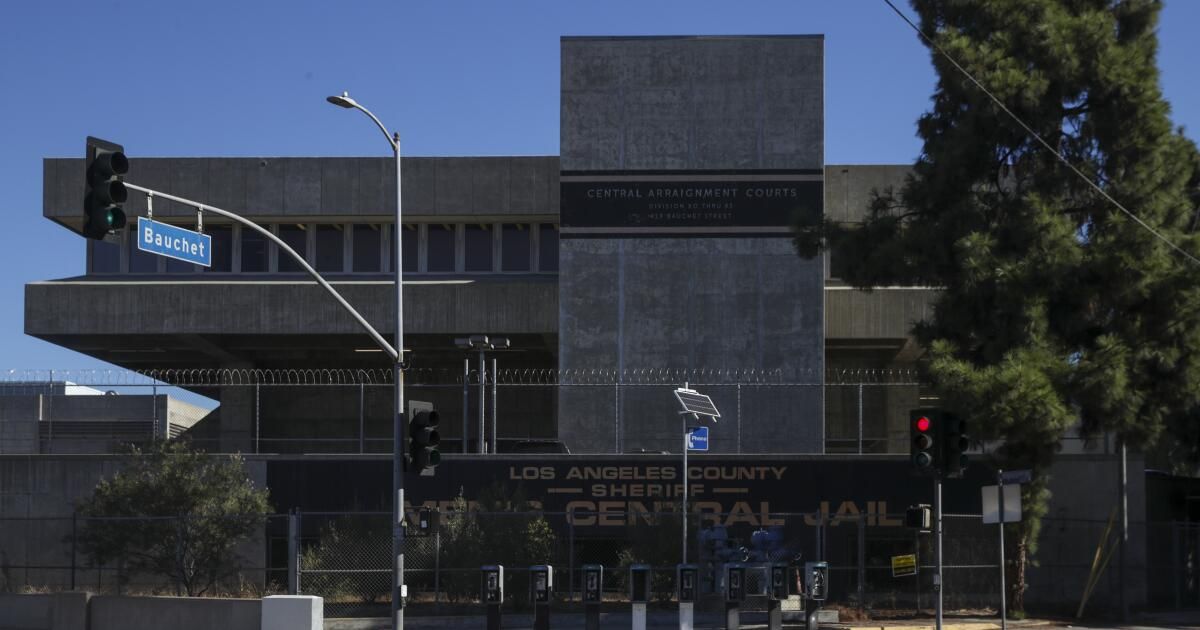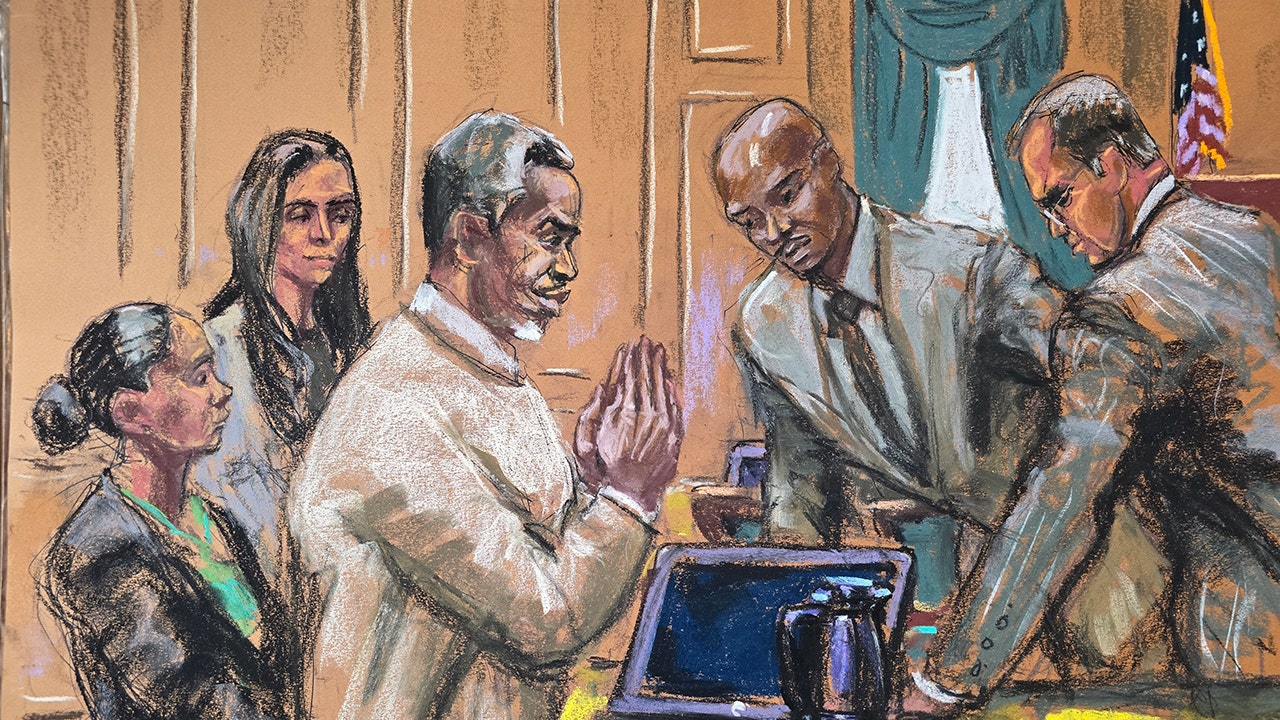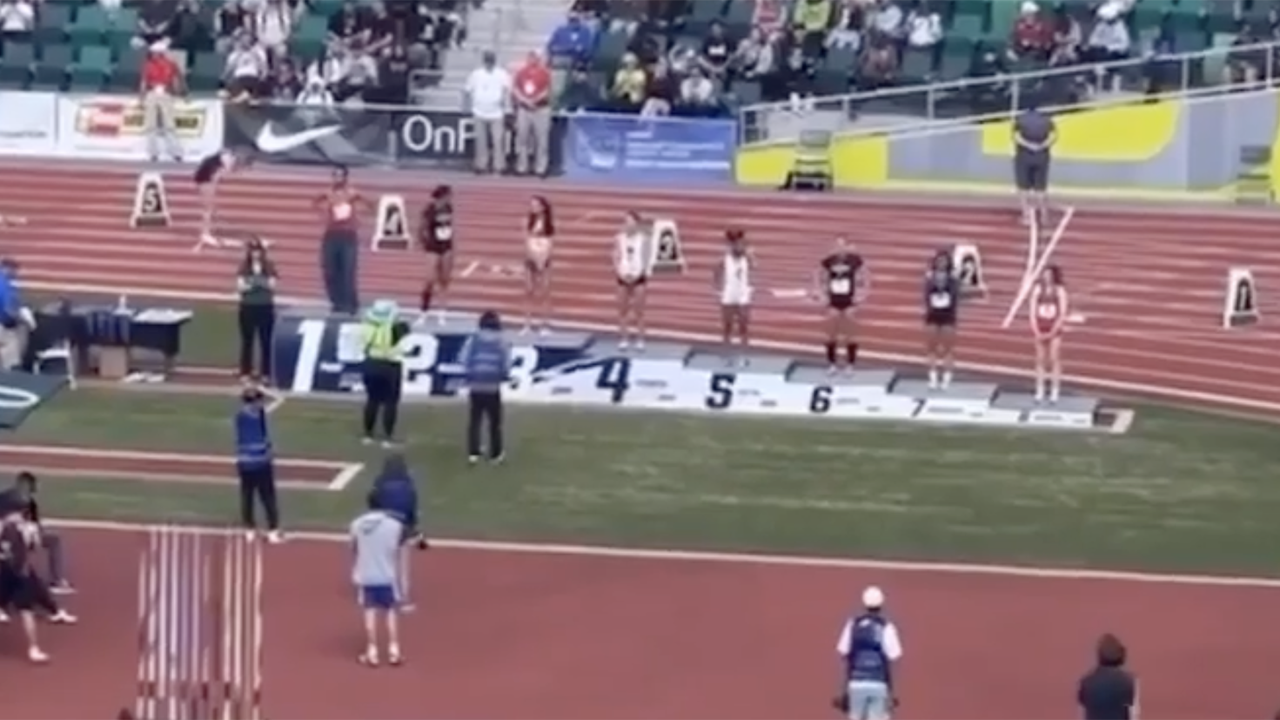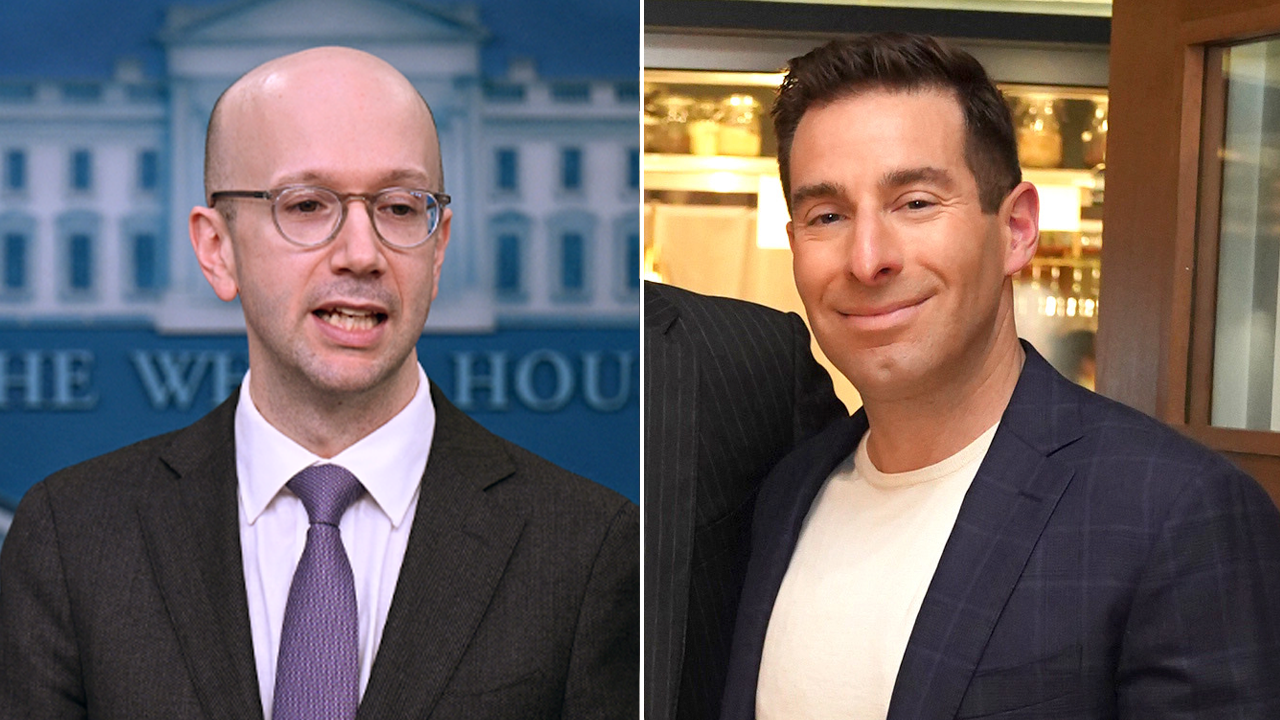Two years after a Los Angeles County sheriff's deputy was caught on camera slamming a handcuffed inmate's head against a concrete wall, prosecutors decided not to file charges against any of the jailers involved.
The district attorney's office explained the move in a memo last month, saying prosecutors couldn't say whether the violence was intentional since one of the officers alleged it was actually the inmate's “own impulse” that “caused that his head made contact with the wall. .”
The decision comes a year after the American Civil Liberties Union of Southern California first released video of the incident at Men's Central Jail. who posted a 15-second clip online. He graphic surveillance video showed two deputies chatting when an inmate emerged from his cell with his hands cuffed behind his back. One of the officers appeared to grab the inmate from behind and slam him against the wall, apparently without provocation. Photos of his injuries show the man suffered a 3-inch deep head wound.
This week, Peter Eliasberg, the ACLU's lead attorney involved in two long-running class-action lawsuits against prisons, denounced the district attorney's decision not to prosecute the officers.
“On its own, it is nothing short of pathetic,” he told The Times. “But it is outrageous when we relate it to the history of the district attorney's office coddling criminal behavior by the Sheriff's Department.”
He said the ACLU plans to ask the U.S. Department of Justice to take over the case, noting that federal prosecutors had already obtained convictions against other jail officers before district attorneys declined to prosecute.
The Los Angeles County district attorney's office told The Times in an email that it “takes allegations of misconduct by jail deputies extremely seriously” and reviews each case based on the evidence.
“This office thoroughly reviewed the allegations in this case,” the email said, adding that prosecutors ultimately “concluded that the allegations could not be proven beyond a reasonable doubt.”
The Sheriff's Department said in a statement Friday that both deputies are still with the department. Now that the district attorney's office is done with the case, sheriff's officials will decide whether the deputies violated any policies or procedures.
“The department expects custodial staff to carry out their responsibilities professionally with integrity and compassion,” the statement said. “Anyone who fails to uphold our standards of care and violates Department policy will be held accountable.”
The agents did not respond to emailed requests for comment and it was not immediately clear if they had attorneys.
The 2022 incident took place in a high-security unit of the Men's Central Jail, where all prisoners are handcuffed through a slot in the door before they are allowed to leave their cells. Each time they leave, policy dictates that they be escorted by two officers “who are required to maintain firm control over the inmate.”
It's the same unit, ACLU lawyers said, that has since been the scene of other problems. On Wednesday, The Times reported that supervisory inspectors captured eight officers in the high-security unit. Watching a “sexually explicit video” instead of caring for a suicidal inmate.
One of the inspectors described the unit as “musty” and damp and said the men who live there do not have books or pens. “They have absolutely nothing and it's completely dark,” Oversight Commissioner Haley Broder said in an interview. “Being down there for 30 minutes, I don't know how anyone could survive this.”
According to the district attorney's memo, the inmate in the surveillance video, whose name was redacted, had been housed in that high-security unit because he had previously threatened to stab officers and had an “extensive history” of assaulting people. .
On July 4, 2022, the memo said, officers José Peralta and Johnathan Gutiérrez walked to the unidentified inmate's cell to accompany him to the shower. After he was handcuffed and left the cell, officers said he told them, “Don't touch me.”
Because the surveillance video has no sound, it is not possible to know what the three men said to each other (if anything). But according to the district attorney's memo, Peralta claimed the inmate threatened to head-butt Gutierrez.
According to Gutierrez's account, once the inmate left his cell, he quickly turned toward the shower with a “sudden movement” that caught the officer off guard, according to the memo. Gutiérrez reacted by grabbing the inmate's forearm and reaching for his shoulder. Then, he alleges, the inmate “threw his upper body forward.”
It all happened so quickly, Gutiérrez said, that he focused solely on controlling the inmate. According to the memo, the officer said his right hand “ended up behind” the inmate's head as the man advanced.
“It was his own momentum that caused his head to make contact with the wall,” Gutierrez wrote in a use-of-force report that prosecutors cited in their memo.
Eliasberg characterized that description as “patently false.”
When investigators interviewed the inmate a few hours after the incident, he also appeared to dispute the officers' description and did not say anything about threatening to head-butt them, but said he had been threatened previously.
“I was leaving, the police pulled me out, I kept going and he hit me right in the forehead,” she told them, according to the memo. “That's all I remember. Because the police officer told me yesterday that once they take me out of the cell, they will take me out.”
The memo said he continued to tell investigators that he is taking psychiatric medications and believes he has telepathy. When he couldn't focus on the topic, the researchers cut the interview short.
The officers did not provide voluntary statements to investigators, according to the memo, although both wrote use-of-force reports that prosecutors reviewed when evaluating the case.
To prove that the officers committed a crime, prosecutors wrote, they would have to show that the force was intentional, unlawful and “not self-defense.” But they said the video appears to confirm that the inmate made some “sudden movements” and “began to move his body toward the wall before Gutierrez grabbed him” by the back of the neck.
“It cannot be determined from the video whether Gutierrez deliberately slammed” the inmate into the wall or whether “it was accidental,” prosecutors continued, concluding they did not have enough evidence to move forward with the case.
Corene Kendrick, another ACLU attorney involved in the prison lawsuits, called that reasoning “mind-boggling” and said whether the hit was intentional should be left to a jury.
“Whether the officers intentionally smashed the man's head against the wall or if somehow his head simply hit the wall as they claim, that is something for the jury to determine,” he said. “It's really surprising that they thought no crime was committed here. “If an incarcerated person had slammed an officer’s head into the wall and caused those injuries, I somehow don’t think the district attorney’s office would decline to prosecute.”
Nearly a decade ago, the ACLU raised similar allegations in a scathing July 2015 letter to then-District Attorney Jackie Lacey. The letter focused on the failure of local prosecutors to file charges against a group of officers who beat and pepper-sprayed a visitor they claimed had attacked them in 2011.
County prosecutors initially charged the visitor, Gabriel Carrillo, with assault on a peace officer and other crimes, but said there was “no evidence to suggest the officers acted inappropriately.”
After the US attorney's office took over the case, Federal prosecutors obtained criminal convictions against five deputies, including two who admitted in court that Carrillo was, in fact, handcuffed at the time of the attack. Ultimately, Carrillo filed a lawsuit and the case was settled for $1.2 million.
According to the ACLU letter, the Carrillo case was part of a larger pattern. The district attorney's office rushed to file charges against inmates, often without even reviewing video evidence, but “almost never” filed charges against officers, the civil rights organization said.
Eliasberg said this week that little has changed.
“This is just further evidence of the district attorney's unwillingness to hold accountable criminal behavior by law enforcement,” he said. “The ACLU will quickly ask the United States Department of Justice to investigate this incident and prosecute him as it did in 2011 and 2012.”
The Sheriff's Department is currently subject to several consent decrees stemming from federal lawsuits. One, a case known as Rosas vs. Luna, began in 2012 when prisoners alleged “degrading, cruel and sadistic attacks against prisoners” had become commonplace. Many of the beatings meted out by officers, the lawsuit alleged, were “far more severe than the infamous 1991 beating of Rodney King.”
After three years of legal wrangling, in 2015 inmates, represented by the ACLU, and the county reached an agreement on specific changes the Sheriff's Department would make to reduce the number of beatings behind bars.
Nearly a decade later, there have been some signs of improvement, as county data shows jailers punch inmates in the face much less frequently than before. But the department has yet to comply with all terms of the agreement. The case is still ongoing.












